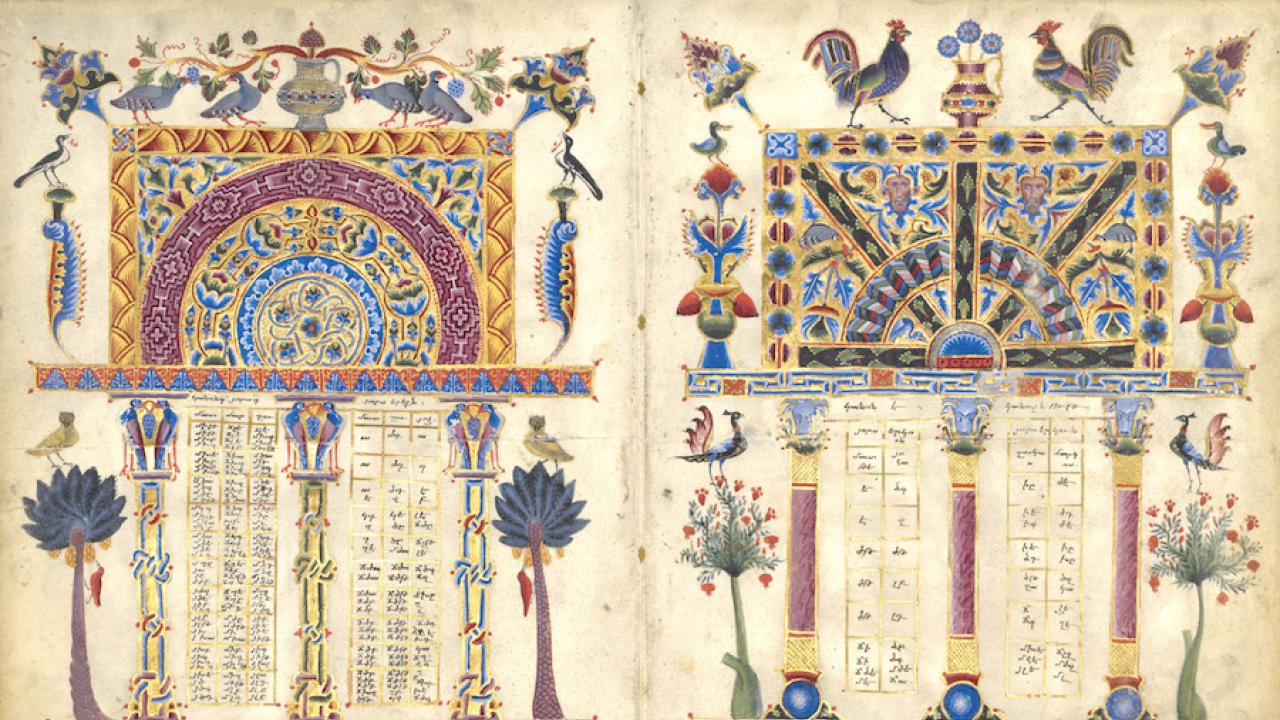
Eight Facts About Eight 'Missing Pages'
While researching and writing The Missing Pages: The Modern Life of a Medieval Manuscript from Genocide to Justice, art history professor Heghnar Watenpaugh found unique research challenges and solutions, along with unexpected discoveries. Published in February, Watenpaugh’s book tells the story of eight illustrated pages from a 12th-century Armenian manuscript that disappeared in the early 20th century and ended up in the J. Paul Getty Museum collection decades later.
Here are eight fascinating facts about Watenpaugh’s research on those eight pages.
- The history of the places the pages went is vague. Most of the towns and cities are “very modest places,” Watenpaugh said, with no historical resources – not even on the level of small museum such as the Hattie Weber Museum in Davis.
- Watenpaugh wanted to use architecture as a framing device for the journey of the pages, but as the result of the Armenian genocide, massive population displacement, shifting borders, and old and new wars, many historic buildings were no longer recognizable. Instead, she relied on maps drawn by survivors of the Armenian genocide. “They were inaccurate maps drawn from memory pointing to places that haven’t existed for decades,” she said. But they worked.
- The research took on a bit of cloak and dagger aspect when one source would only meet with Watenpaugh in the gift shop of the Detroit Institute of Arts.
- Aleppo, Syria was the departure place for most Armenian refugees, including the family that had possession of the pages, but Watenpaugh was unable to go there because of the ongoing war.
- Melkon Atamian brought the pages to the United States in 1923. When his grandnephew Gil Atamian sold them to the Getty in 1994, no one else in the family knew about it.
- In 2010, the Western Prelacy of the Armenian Apostolic Church of America sued the museum for return of the pages. It’s unclear why the church waited until 15 years after the Getty purchased the pages to file a lawsuit for their return.
- The pages are the earliest known by Armenian manuscript illuminator Toros Roslin (1210-1270) who is acclaimed for his artistic innovations.
- After reading Watenpaugh’s 2010 Los Angeles Times op-ed about the missing pages, a Vallejo family asked her advice about an Armenian manuscript they owned. The 15th century manuscript is now in the collection of the Metropolitan Museum of Art.
Read more about The Missing Pages.
